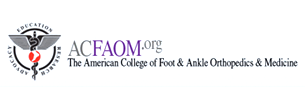Shoe shopping with teens? Sanity-saving tips for parents
Many parents agonize over making just the right choice for their baby’s first pair of shoes. In one important way, however, picking infant shoes is easier than choosing for an older child: Babies have nothing to say about what style or brand you put on their feet. Teens, however, have strong opinions about fashion—opinions that extend all the way to their toes. That could be why six out of 10 teens today experience foot pain, and two out of every 10 who suffer from foot pain experience it because they’re wearing high heels or other uncomfortable footwear, according to a 2012 survey by the American Podiatric Medical Association (APMA).
“Foot health is incredibly important to a person’s overall health and well-being, especially in the teen years when feet are still growing.” “While our survey found that half of teens see feet as important to their overall health, many are still living with foot pain. It’s vital that we educate teens and their parents on how to properly care for their feet.”
With kids of all ages—including teens—heading back to school, parents will be buying a lot of shoes in the coming weeks. APMA offers these tips for choosing teen-friendly footwear that is good looking, stylish, comfortable, and smart:
- Sports are the top cause of foot pain in teenagers, APMA’s survey found. Seventy-five percent of high school students play a school or recreational sport, and nearly 40 percent of that group has injured their feet while playing, according to the survey.
- When buying an athletic shoe, parents should consider what activity the teen will use the shoe for. Different sports require different shoes, and choosing one made specifically for that sport can help prevent injury. Shop at a store that specializes in athletic footwear and have the shoe fitted professionally.
- Price is not indicative of quality, but all good athletic shoes need to offer plenty of support and cushioning. Shoes should be stiff across the middle, but bend at the ball of the foot. Like all shoes, athletic shoes should be comfortable right away, without any “breaking-in” period required for comfort.
- Because they’re still growing, teens should always get their feet measured before buying new shoes. Feet are usually not the same size, so buy for the larger foot. Because feet expand throughout the day, shop later in the afternoon, when feet are at their largest.
- While many teen boys virtually live in athletic shoes, girls may be more inclined to vary their wardrobe and wear dressy shoes, including high heels. More girls than boys suffer from pain due to uncomfortable shoes, and high heels are the most painful, with 64 percent of girls surveyed reporting they’ve experienced pain from high heels.
- Good shoes support both the front and back of the foot. While high heels are okay for special occasions, teenage girls probably shouldn’t be wearing them all day long. Instead of a high heel, consider flats, or—if a teen simply must have the added height—platform or wedge heels. Keep in mind if a heeled shoe is uncomfortable when the wearer is just standing in it, it’s not likely to feel any better when she’s walking in it.
- For both boys and girls, choose dress shoes that offer plenty of support and cushioning. Opt for breathable materials, like leather or canvas. Shoes should only bend at the ball of the foot; the sole should never be twistable or bend anywhere else. Look for plenty of room for toes and opt for shoes with wide, round, or square toe boxes. Pointed shoes can pinch toes, leading to a host of foot problems.
Teens who experience foot pain shouldn’t ignore it.
“Fewer than two out of 10 teens have ever seen a podiatrist to treat foot problems”. “Any kind of foot pain is not normal. Teens experiencing foot pain should visit a podiatrist who can help diagnose and treat their problem.”
You can see a list of podiatrist-recommended children’s footwear by visiting www.apma.org/seal and selecting “Find Products by Type” then “Footwear, Children’s.”
Use the “Find a Podiatrist” feature to locate a Doctor near you and make an appointment.. Visit www.apma.org to learn more about foot health and care.
Shoe shopping for kids: A parent’s guide to a year-round task
What is it about children’s feet that make them seem like the fastest-growing part of their bodies? With back-to-school shopping behind you for another year, you might hope you can stop spending on shoes—at least until flip-flop season arrives with spring. But kids’ feet do grow year round, right along with the rest of them. In fact, according to the American Podiatric Medical Association (APMA), a child’s shoe and sock sizes may change every few months. Comfortable, sturdy shoes are among the most important articles of clothing you’ll buy for your child at any time of year. Ill-fitting shoes can cause problems that range from minor blisters and discomfort to serious injuries and impaired development.
“A pair of well-made shoes can keep children safe from foot problems such as sprains and strains, both in class and on the playground”. “Unless your child complains of discomfort, you may not realize he or she needs new shoes. Parents need to be vigilant to ensure kids are wearing shoes that fit properly and provide the stability and support kids need.”
Conduct the time-honored toe test-using your thumb or forefinger to determine where the child’s big toe is inside the shoe-once a month. Inspect shoes regularly for signs of wear that could compromise their stability. When it’s time to buy children’s shoes, APMA has some guidelines for parents.
“Checking for three different aspects of a shoe’s design makes it easy for parents to distinguish which models are foot-friendly”.
APMA recommends parents perform a simple, three-step inspection on new shoes before buying:
- Look for a stiff heel. The heel counter should not collapse when pressed from both sides.
- Ensure the shoe bends at the toes, but nowhere else.
- Finally, make sure the shoe does not twist across the middle.
In addition, keep these tips in mind to help ensure kids are wearing comfortable shoes and practicing good foot health:
- Take children with you when you buy their shoes and shop at the end of the day when feet are at their biggest. Every shoe fits differently, and allowing a child to have a say in the shoe-shopping process can help promote healthy foot care habits down the road.
- Always buy for the larger foot. Feet are rarely the exact same size, so buy a shoe that fits the slightly larger foot.
- Avoid shoes that require a “break-in” period to feel comfortable. Shoes should be comfortable immediately. Be sure your child tries on the shoes wearing whatever type of socks or tights he or she will use with them.
- Never hand down footwear. Just because a shoe fits one child comfortably doesn’t mean it will fit another in the same way. Also, sharing shoes can spread athlete’s foot and nail fungus.
- Whenever possible, purchase shoes at a shoe store staffed by well-trained shoe fitters. An experienced salesperson can help relieve worries over getting the proper fit.
If your child’s shoes show uneven wear or wear out on the heels quickly, it could indicate a problem that should be examined by a podiatrist. You can see a list of podiatrist-recommended children’s footwear by Use the “Find a Podiatrist” feature to locate a Doctor near you and make an appointment.. Visit www.apma.org to learn more about foot health and care.
Kick-start kids’ summer with shoe-shopping tips for parents
When it comes to the health of your children, you do everything you can to help them grow up healthy and strong. You get them vaccinated, take them to the dentist and optometrist, and you do your best to ensure they eat a nutritious diet that will help them grow. But are you aware of the important role foot health plays in a child’s overall development?
“Every parent knows the frustration of trying to keep up with children who grow quickly, and that rapid pace of growth can mean children need new shoes and socks every few months,” says the American Podiatric Medical Association (APMA). “With warm weather on the way, it’s a great time for parents to take a look at their children’s shoes to ensure they’re wearing footwear that will serve them well through the active days of summer.”
Ill-fitting footwear can irritate kids’ feet and aggravate existing conditions caused by injury, heredity, deformity, or illness. APMA offers parents guidance for keeping kids in shoes that fit properly and protect their feet:
- Take the child with you while shoe shopping and have him or her try on the shoes. Every shoe fits differently, so even if you’re buying your child’s correct size, the shoe still may not be comfortable. Have the child try on footwear with the socks or tights you expect will be worn with the shoes.
- Always measure a child’s foot before buying new shoes. Children’s feet grow so quickly that their shoe size can literally change from month to month.
- Shop late in the afternoon when feet are largest, and make sure to fit the shoe to the larger foot. Everyone’s feet swell by the end of the day, and no one has feet that are exactly the same size. One will always be slightly larger.
- Never buy shoes that are too large or need a “break-in” period. Shoes should be comfortable immediately. “Buying shoes for kids isn’t like buying a too-large coat that you know they’ll grow into”. “Shoes that are too big can irritate a child’s feet, and even lead to tripping or injury.”
- Let kids have a say-within reason. “Of course parents will have to guide children toward good choices”. “But allowing kids to have a say in the shoe-buying process can help promote healthy foot habits down the road.”
Once your child takes the new shoes home, keep watch to ensure the shoes stay comfortable and in good shape. Examine the child’s feet at the end of the day for signs of irritation. If your child always wants to remove one or both of the shoes, it may mean the shoes are uncomfortable.
Finally, “Never hand down footwear.”
“Just because a shoe size fits one child comfortably doesn’t mean it will fit another the same way”. “Plus, sharing shoes can spread fungi like athlete’s foot and nail fungus.”
Use the “Find a Podiatrist” feature to locate a Doctor near you and make an appointment.. Visit www.apma.org to learn more about foot health and care.
Avoiding footwear fumbles when exercising or playing sports
No one disputes that exercise provides a host of health benefits, from helping control weight to improving cardiovascular function. But exercising in the wrong footwear can cause more harm than good, especially because foot health is integral to overall well-being.
“To get the most out of your workout or from playing a favorite sport, it’s imperative to choose the right footwear for the type of exercise you’ll engage in, says the American Podiatric Medical Association (APMA). “Improper footwear can lead to irritation and injury.”
Foot or ankle sprains and fractures are the most common types of injuries related to exercise and footwear. The type of exercise or sport you prefer can influence the type of injury you could experience. For example, foot and ankle sprains and fractures are generally more common among football players, while basketball players may suffer more ankle sprains, and runners experience stress fractures to feet or ankles.
APMA offers some guidance on how to avoid foot injury while exercising:
- Always warm up before exercise. Just as you stretch to warm up leg and arm muscles, your feet need to warm up gradually too.
- If you experience foot pain while exercising or engaging in physical activity, stop immediately. Foot pain is not normal, and you shouldn’t feel any when you exercise. If pain persists even after you stop your workout, see a podiatrist.
- Always wear supportive shoes that are appropriate for the type of physical activity you’re engaging in. “Runners need more arch support and cushioning to absorb impact”. “Basketball players require extra ankle support to prevent injury from side-to-side movement—which is why basketball shoes come up over the ankles.” Choosing the right footwear can help ensure you minimize the risk of injury and enjoy a more productive and comfortable workout.
- Don’t go it alone when you’re shopping for a workout or sports shoe. Go to a store that specializes in athletic footwear and ask to be fitted professionally before you buy. Shoes should fit comfortably as soon as you try them on; never assume you’ll “break in” an uncomfortable athletic shoe. Shop toward the end of the day, when feet are at their largest due to normal daily swelling.
- Whatever your exercise or sport of choice, your athletic shoes should offer plenty of support in the front and back.
Finally, when athletic shoes begin to show signs of wearing out, it’s time to replace them. “Examine the tread, especially around mid-sole. “Generally, you should replace athletic shoes every year, and running shoes every 300 to 400 miles.”
Use the “Find a Podiatrist” feature to locate a Doctor near you and make an appointment..
Visit www.apma.org to learn more about foot health and care.
Fighting the five most common foot woes
From eating better foods to getting an adequate amount of sleep and exercise, we live in a very health-conscious society. So why is it that many Americans routinely overlook one of the cornerstones of good health? While nearly 70 percent of Americans say they want to be healthier five years from now, just 51 percent recognize that foot health can be a key to achieving that goal, according to a survey from the American Podiatric Medical Association (APMA).
“Nearly eight in 10 adults have experienced some type of foot ailment in their lives. Yet despite the pain, close to three in 10 do nothing about it, simply choosing to live with their pain“. Meanwhile, more than half of those surveyed said they had endured foot pain at some point in their lives but have not sought treatment from a podiatrist.
So what are the five most common types of foot problems, and what causes them? Here are some tips from today’s podiatrists:
- Nail problems are one of the most prevalent foot woes in both men and women. These problems can range from ingrown toenails to fungal infections. “Ingrown toenails—a condition in which the corners of sides of a nail dig painfully into the soft tissue of the nail grooves—is the most common form of nail problem”. To avoid ingrown toenails, trim nails straight across and don’t dig into the corners. If a toenail becomes infected, see a podiatrist immediately for treatment. Those with diabetes, peripheral vascular disease, and other circulatory disorders should seek a podiatrist’s care on a regular basis to help prevent complications.
- Sweaty feet and foot odor are two foot conditions that are often experienced together. While stinky feet are definitely embarrassing, feet that sweat excessively can lead to other foot problems, even creating an environment conducive to the development of athlete’s foot. Closed shoes make feet sweat, but in the winter you can’t avoid wearing them. Instead, practice good foot hygiene. Wash feet daily with soap and water, keep shoes and socks dry, and choose socks that wick away moisture. Change shoes and socks regularly and consider rubbing cornstarch or applying antiperspirant directly onto the soles of your feet.
- Pain in the ball of the feet—Nearly one-third of adults have reported pain in the balls of their feet. Pain in this location can be caused by over-exertion, injury, or ill-fitting shoes. To avoid pain, always wear well-fitting, supportive, activity-appropriate shoes when walking, running, or engaging in other physical activity. If necessary, replace the insoles that came in your shoes with ones that provide additional cushioning.
- Heel pain—This type of pain can have many sources, including weight gain, excessive foot flattening, muscle imbalance, injury, or even improper footwear. To kick heel pain to the curb, always be sure to warm up and stretch properly before and after exercise. If wearing high heels, opt for heels that are no more than two to three inches in height. For persistent pain, treatment can range from prescribed orthotic devices and medications to cortisone injections, physical therapy, and rarely, surgery.
- Bunions—A bunion is an enlargement of the joint at the base of the big toe. Treatments range from self-remedies such as using a bunion pad around the bony prominence, to ice packs to reduce the swelling, and to avoiding shoes that could irritate the bunion and even make the problem worse. For persistent pain, see a podiatrist for a full range of treatment options.
“While foot problems are common, that doesn’t mean people should be resigned to living with pain,” The RI Podiatric Medical Association says. “Consulting today’s podiatrist can help people feel better sooner, and get back to living healthier lives.”
Use the “Find a Podiatrist” feature to locate a Dr near you and make an appointment. Visit www.apma.org to learn more about foot health and care.
Choosing summer footwear that looks and feels great
So long, snow boots—warm weather is here at last! But while you’re skipping through summer in your saucy sandals or padding through the sand in your favorite flip-flops, what toll will your seasonal footwear take on your hardworking feet? Nearly eight of every 10 Americans have experienced foot problems caused by wearing uncomfortable or ill-fitting shoes, according to the American Podiatric Medical Association (APMA).
“Many of us increase our activity levels in the summer, and that could mean an increased risk of foot and ankle discomfort or even injury,” says the RIPMA (RI Podiatric Medical Association) president. “Plus, many of the shoes we enjoy wearing during warm weather, like flip-flops and sandals, may not always be the best choice in terms of foot health.”
Once considered only beach wear, flip-flops have gone fashionable, now showing up in offices, classrooms, and social events when warm weather arrives. But some styles may be more harmful to your feet than others and can cause blisters and foot pain. Remember the following tips when shopping for flip-flops:
- Forego vinyl or rubber and look for high-quality, soft leather, which will minimize the potential for blisters and other irritations. APMA certifies some footwear products with its Seal of Acceptance, which tells you a team of APMA podiatrists has evaluated the footwear to ensure it allows the most normal foot function and promotes foot health. View the list of products by visiting www.apma.org/seal.
- Like all shoes, the flip-flop should bend at the ball of the foot. Don’t buy it if the flip-flop bends completely in half.
- Straps should fit comfortably but not be too loose or too snug. Your foot should not hang off the edge of the flip-flop. The thong between the toes should not be irritating.
- If last year’s flip-flops show severe signs of wear, toss them and buy a new pair.
- Don’t wear flip-flops for long walks; even the sturdiest styles don’t offer sufficient arch support and shock absorption for extended wearing. And never wear them when doing yard work or playing sports.
- “If you suffer from heel pain or diabetes, avoid flip-flops altogether.
As popular as flip-flops, sandals are versatile options for warm weather footwear, but you don’t have to sacrifice foot health to look good in them. You should choose a sandal as much for its comfort and support as its fashion appeal. Fortunately, following a few simple steps can ensure your feet look and feel good in the summer’s hottest fashion sandals:
- Flats and slides are comfy and convenient, but prolonged wearing and inadequate support and cushioning may lead to arch and heel pain. Use cushioned inserts to improve sandals’ support, and choose styles that have soles that don’t twist excessively.
- Gladiator sandals are back in step this season, but some styles may irritate the toes and cause calluses on the heels. “Choose natural materials like soft, supple leather,” RIPMA suggests. Toes and heels should not hang off edges.
- Platforms and high heels may make your legs look great, but they can also put you at risk of foot and ankle injuries. Opt for heels less than two inches high, which offer more stability.
- Rubber soles with good traction are a must for anyone wearing wedges or espadrilles.
- Peep-toe sandals can put a lot of pressure on your feet, causing bunions and hammertoes over time. Wear them for short periods only, and use toe inserts to improve comfort.
- Ankle-wrap sandals often lack true ankle support, and friction from the straps may cause blisters. Choose sandals with straps made of soft, breathable material like leather, cotton, or satin. Never wrap the straps too tightly.
- If you experience persistent foot pain, see a podiatrist. Feet shouldn’t hurt all the time, and if they do, it may indicate injury, irritation, or illness. Look for the DPM after the podiatrist’s name. DPM stands for “Doctor of Podiatric Medicine” and means the physician has completed years of specialized foot and ankle training.
Use the “Find a Podiatrist” feature here to find a Dr. near you! Visit www.apma.org to learn more about foot health and care.












